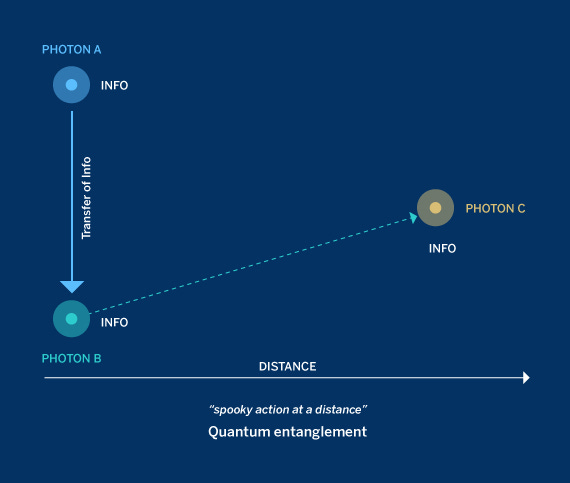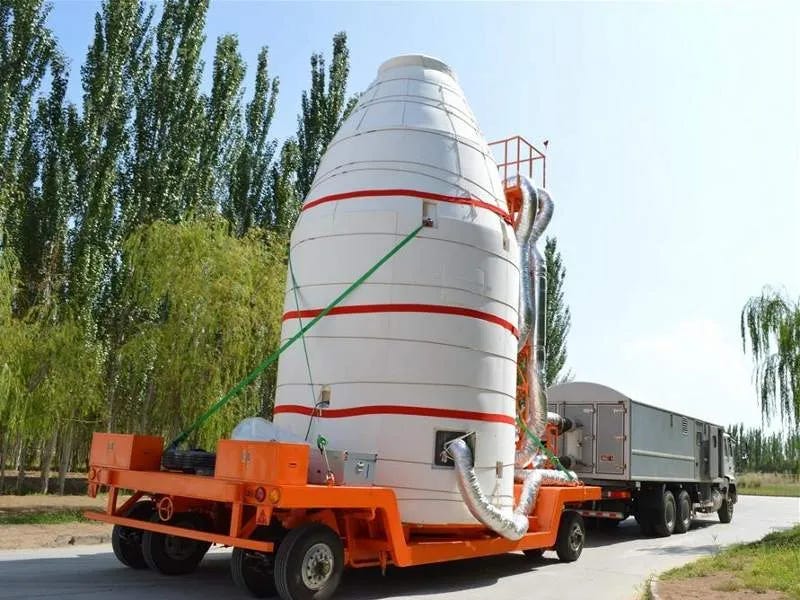Quantum teleportation
Teleporting matter is not yet possible, but we can move information. And that is what a group of Chinese scientists did using the entanglement.
![Could human teleportation, as seen in Star Trek, ever be achieved? [here]](/en/content/images/size/w2000/2024/08/star-trek-teleportation-b13db08.webp)
Beyond space-time?
Teleportation basically refers to the process of instantaneously transporting matter through space from one place to another. Please, keep this concept in mind: Instantaneity.
When I say the word teleportation, what comes to mind? Maybe it’s the transporter from Star Trek instantly beaming the crew down to a planet, or the time-traveling TARDIS of Doctor Who. In science fiction, teleportation is an expedient device to deliver people from one place to another with no time wasted on the journey. But quantum teleportation? Well, that’s something dramatically different — and entirely real.
Janna Levin on “The Joy of Why,” a podcast from Quanta Magazine
The Chinese Experiment
Well, teleporting matter is not yet possible, but we can move information. In 2017, a group of Chinese scientists used a photon to send information 300 miles into space (the previous record was about 60 miles). The photon did not materialize somewhere else; it did not disappear from its position to appear hundreds of miles away. That would be great, but as Janna Levin said, science fiction teleportation is not exactly what the Chinese scientists got. The photon is a zero-mass particle that carries light and has a specific quantum state. It is the information about this quantum state that the Chinese scientists teleported: It’s called quantum teleportation, and it’s instantaneous. That’s what makes it important for developing a new form of communication.

Quantum Key Distribution
The photon information was received by the Micius Quantum Satellite, which the Chinese launched into orbit in 2016. The Micius data collection system was developed around the principle of “Quantum key distribution” (QKD) which is based also on the “Quantum Cryptography” (QC). This is a system based on quantum mechanics that provides encrypted communication through the principle of entanglement. As you know, entanglement is the word we use for the characteristic correlations between parts of a quantum system. Entanglement of two particles occurs when their quantum states are linked in such a way that the state of one particle is visible in the other. Chinese scientists created pairs of “entangled” photons, and sent one of them to the Micius, while the other remained on Earth. So, they measured the quantum state of the photon on Earth, and because of entanglement, this measurement immediately affected the state of the photon on the Micius. Instantaneity means no latency and less errors in data transmission; but it also reduces the cost and weight (bytes) of information.

An unlimited potential
So quantum teleportation is not a way to move people from one part of the universe to another, but the key to realizing the Quantum Global Network, a secure way to transmit information instantaneously and over long distances thanks to the entanglement principle. As you can easily imagine, the potential of this quantum-based technology is virtually limitless, and it is already revolutionizing the fields of data storage and communications.
If we have two chips in a quantum computer, and we want to send quantum information from one to the other, the way we can do it is by establishing entanglement between the two chips, and then using teleportation to send information from one to the other. And that’s probably going to be essential for scaling up quantum computing to large systems that can solve really hard problems.
John Preskill, a theoretical physicist at the California Institute of Technology, on “The Joy of Why,” a podcast from Quanta Magazine
Transporters and Quantum Teleportation
And is this technology in China’s hands? Well, the Chinese government is heavily funding QKD technology and plans to have it fully developed by 2030.
More Insights
- Quantum Teleportation: Facts and Myths
- Satellite-relayed intercontinental quantum network
- How Quantum Teleportation Actually Works
- What Is Quantum Teleportation?
- Post-Quantum Cryptography PQC
- Zhao, Fung, Qi, Chen, and Lo, Experimental demonstration of time-shift attack against practical quantum key distribution systems, Physical Review A vol. 78, 2008.
- Scarani and Kurtsiefer, The black paper of quantum cryptography: Real implementation problems, Theoretical Computer Science (560) 2014.
